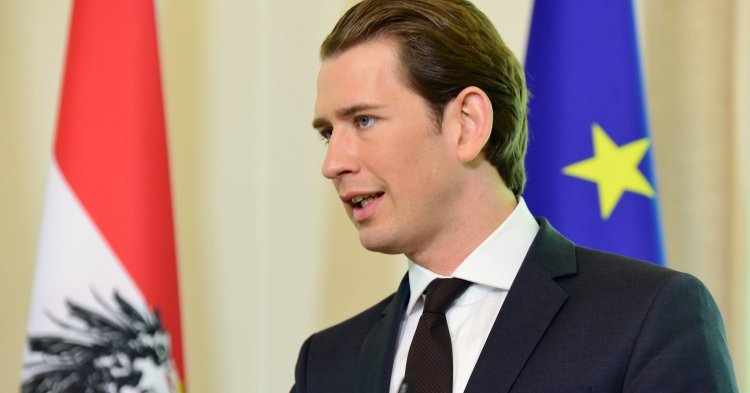“Snap elections now!” the crowd was chanting at Ballhausplatz, the square in front of the chancellor’s office, on Saturday. Up to 5,000 people gathered there to protest the government, millions of citizens followed the newest developments on TV. Those old enough were reminded of the early 2000s when people first protested a right-wing government. And then around 8pm, the whole country stood still: Chancellor Sebastian Kurz finally decided to speak – SNAP ELECTIONS!
How did we get there?
“Have you planned anything people are going to hate you for again?” popular comedian Jan Böhmermann had been asked by one his show guests on Thursday. “You’ll only know in hindsight. For me, this is just my normal show. Might be that Austria is burning tomorrow, though.” – and ’burn’ it did.
On Friday, two German newspapers released a video from 2017 showing two leading FPÖ politicians plotting to take over Austria’s biggest newspaper ahead of the national elections with the help of a Russian oligarch. Once in government, they would reward him with major infrastructure projects. The money would flow into a foundation, not to the party directly, in order to circumvent the court of auditors. On the video, the FPÖ politicians are speaking with a young woman who said she was an oligarch’s niece. However, it seems that the politicians were deceived, or “stinged”, and Jan Böhmermann’s hints have prompted speculation that the German satirist is connected to the affair.
And then on Saturday, Vice-Chancellor Heinz-Christian Strache and his aide Johann Gudenus, leader of the right-wing FPÖ group in the parliament, had to resign. Meanwhile, a mass of protesters had formed outside the chancellor’s office, calling for snap elections. But Sebastian Kurz – nicknamed “Schweigekanzler” (hushing chancellor), which is owed to his silence over numerous wrongdoings by FPÖ figures in the past – remained silent. For hours.
From 2000 to 2019
Many were reminded of the first “Black-Blue Coalition” [2] under Wolfgang Schüssel, who secured chancellorship for his party despite coming in third in the 1999 elections. Only two years later, the coalition broke due to a revolt within the FPÖ that led to the resignation of several key actors. The then chancellor – just like Kurz now – took the underground tunnel from his office to the imperial palace to converse with the president, whose role is ceremonial but who is constitutionally responsible for dismissing the government. In the following elections, Schüssel secured 40% of the vote ... and formed another coalition with a diminished FPÖ.
Whether Kurz, Schüssel’s apprentice, will manage to profit in the same way from the current situation remains to be seen. While it was clear to the protesters and all opposition parties that snap elections had to be called, the chancellor took his time to reflect. In the course of the weekend, Kurz tried to oust Herbert Kickl, Austria’s controversial interior minister, and save this coalition which actually enjoyed quite some popularity. The prospected departure of this “blue mastermind” crossed the red line, however. The government could not be saved and the Chancellor decided to address the public. Not like a statesman but in full campaign mode.
For the first time in Austria’s post-war history, the president had to officially dismiss a minister: Herbert Kickl. In consequence, all FPÖ ministers resigned and will not continue their work until the elections. As there are plans to have a vote of no confidence, it is even unclear whether Kurz remains chancellor (with a minority government) or if an interim government gets installed. Not ideal, given that many important decisions are to be taken in the next months – including key decisions such as the appointment of the Austrian EU Commissioner.
EU and snap elections: the prospects
One can expect Kurz to try to play the victim card and profit from the events, just like Schüssel more than a decade ago. However, the FPÖ will do its best to keep their voters and assume the victim role itself, a very Austrian move in fact. The party’s new leader, Norbert Hofer, is highly popular and only narrowly lost the 2016 presidential elections. It will be easy for him to embody change and renewal.
Austrian politics have not been this unpredictable – and exciting – for a long time. A first indicator on how it all plays out might be the European elections. The conservative ÖVP is expected to come out first. Social Democrats, despite a projected second place, are in general weakly positioned at the moment. If Kurz continues to fish in right-wing waters, there is potential for the Greens and the liberal NEOS in the democratic centre. That, in turn, would require the chancellor to shift back to this centre once he is in coalition talks with either or both of these parties.
Despite all hurt feelings, a renewed coalition with the FPÖ will still be possible after the national elections in September. Kurz simply hopes to emerge in an even stronger position; but whether he succeeds, remains to be seen. As for the EU elections, the effects on the FPÖ are uncertain: Their voters might be discouraged from going to vote at all. On the other hand, FPÖ politicians and supporters alike already shout: ’Now more than ever!’



Follow the comments: |
|
